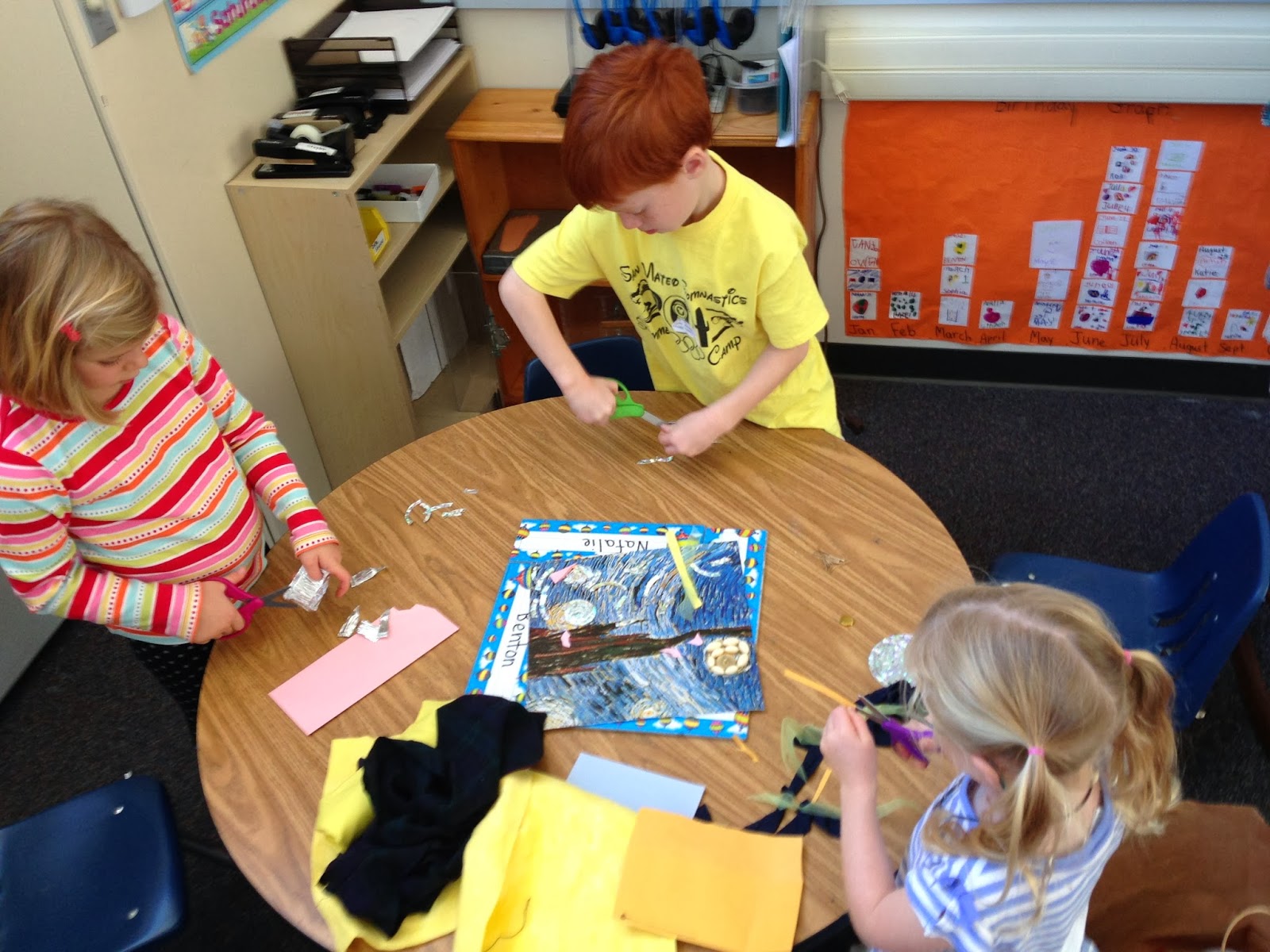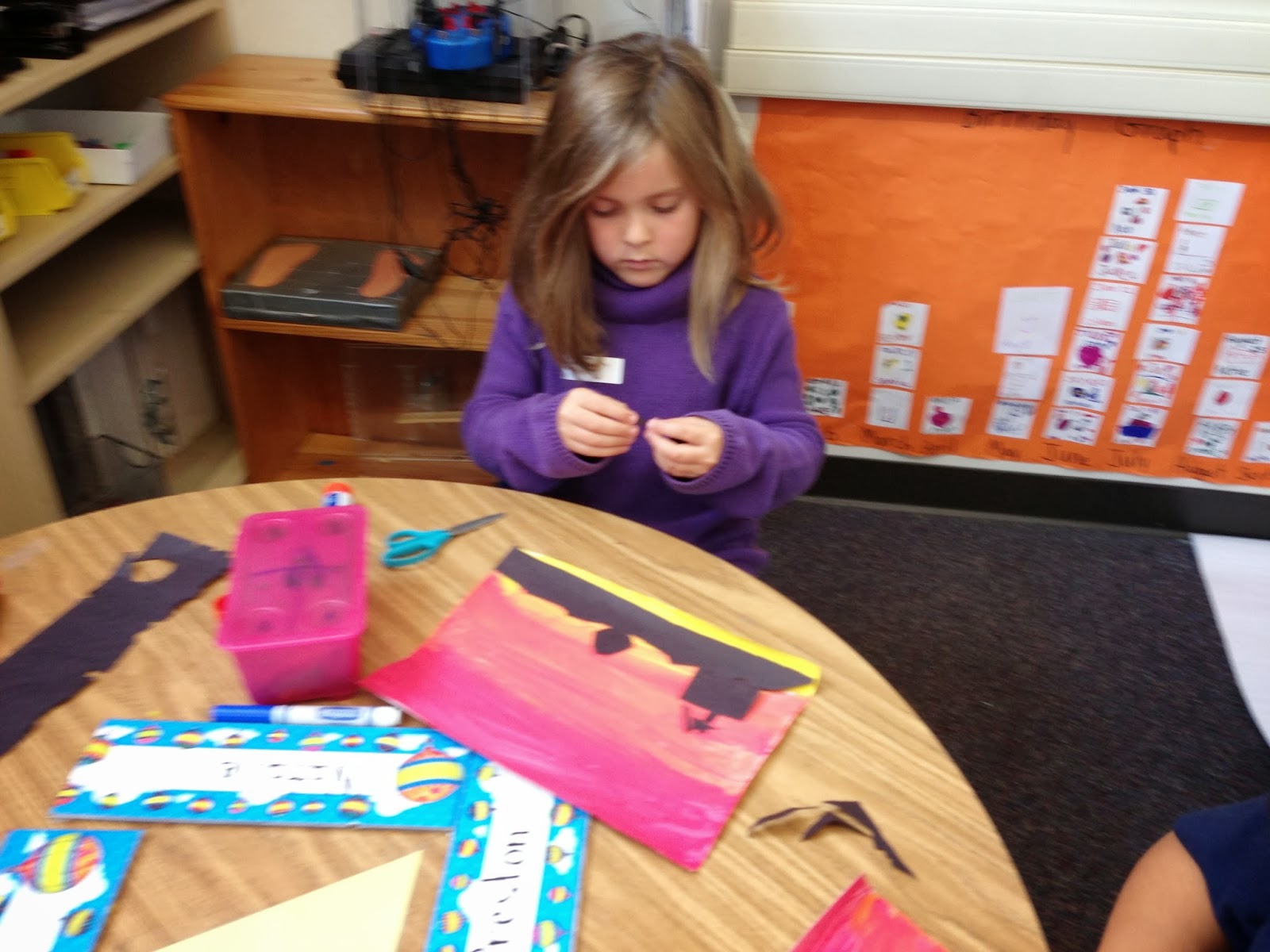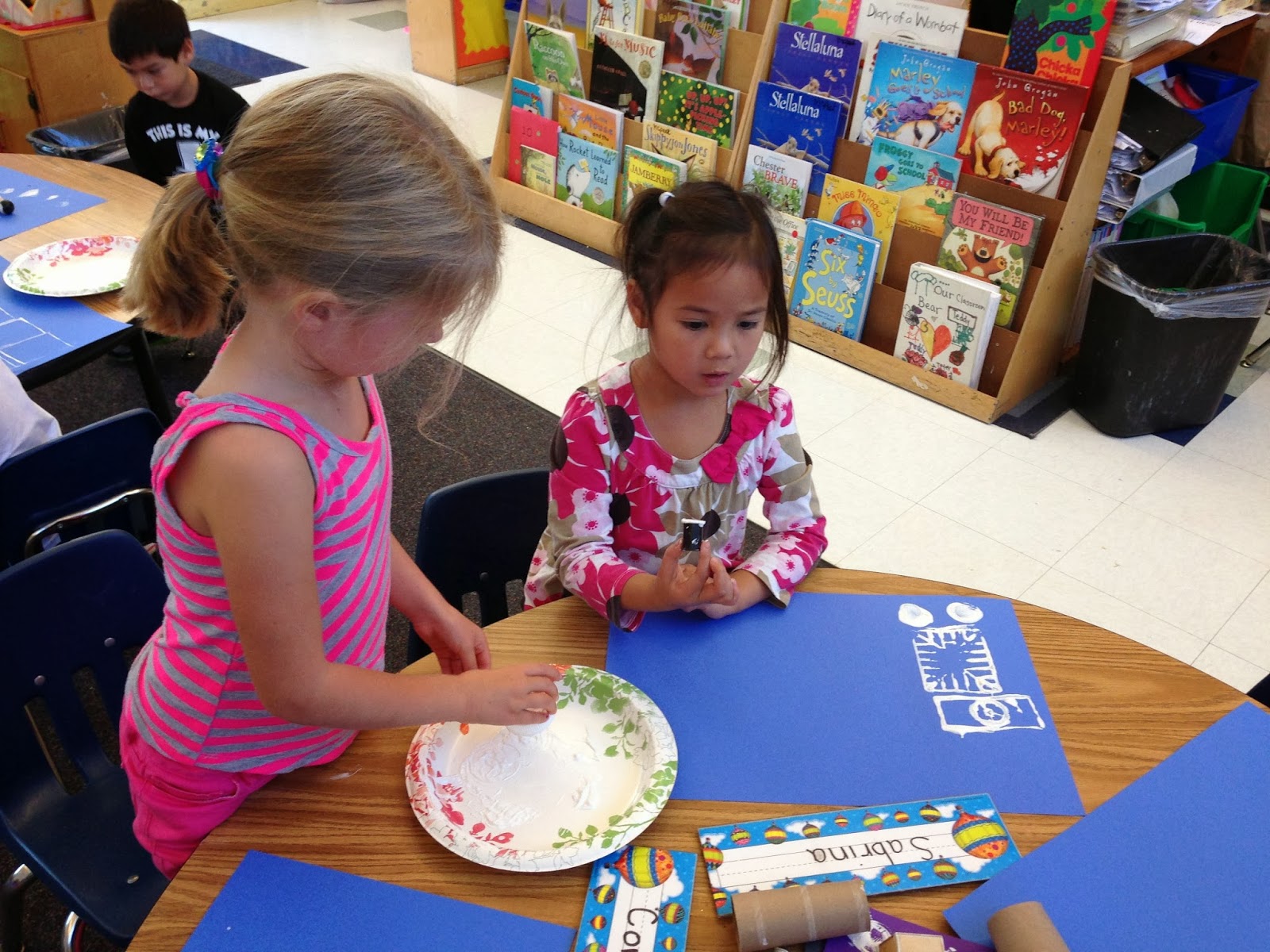We started our Reuse, Reduce, Recycle unit this month and what better way to celebrate than to recreate one of the most famous paintings in the world out of recycled materials!
Here are the many steps of this project:
1. Divide the class into 6 small groups.
2. Assign each group a section of the painting. (I bought a large poster of
Starry Night and gave each group the section of the painting they would be working on.)
3. Head to SCRAP in San Francisco for a field trip!
http://www.scrap-sf.org/
(SCRAP is a non-profit reuse center with everything from papers, textiles, office supplies and everything from buttons to bows to beads to old National Geographics.)
4. Each group went around "shopping" for what they would need to create their section of the painting.
5. Back at school the groups worked with me (one group at a time) to plan their section.
6. Lastly, we glued the recyclables onto a large piece of foam core.
It was quite labor intensive, but the kids were very proud of their final result: van Gogh's
Starry Night made of ribbon, feathers, various papers, fabrics, glitter, buttons, old game pieces, yarn, string, coffee stirrers, yogurt lids, toothpicks and burlap!
Here is a great slideshow I showed the class of other artists who use recycled materials in their art:
10 Amazing Artists Using Recycled Materials for Their Art.





















































